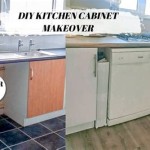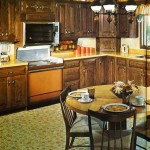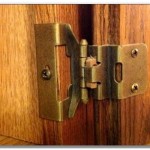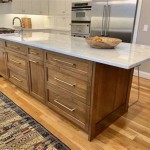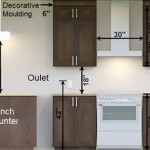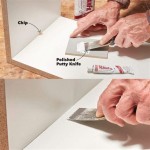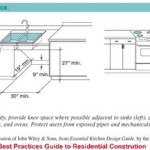Essential Tools for Precise Kitchen Cabinet Installation
Installing kitchen cabinets is a home improvement project that demands precision and careful execution. While it might be tempting to rush the process, using the right tools and understanding their functions is crucial for achieving a professional-looking and structurally sound result. This article will detail the essential tools needed for successful kitchen cabinet installation, emphasizing their importance and proper usage.
A common mistake when taking on DIY projects is underestimating the scope of the work involved. Kitchen cabinet installation is no exception. It requires more than just a drill and some screws. Successfully installing cabinets involves accurate measuring, leveling, secure fastening, and often some degree of modification to ensure a seamless fit. Having the correct tools not only makes the job easier but also contributes significantly to the quality and longevity of the installation.
Measuring and Layout Tools
Accurate measurements are the foundation of any successful cabinet installation. Inaccurate measurements can lead to gaps, uneven surfaces, and ultimately, a structurally unsound installation. Using appropriate measuring and layout tools is critical to avoid such issues.
Tape Measure: A high-quality tape measure, preferably one that is at least 25 feet long, is essential. Look for features like a wide blade for easy reading and a magnetic tip for added convenience when working alone. Consistent use of the same tape measure throughout the project ensures consistent measurements, minimizing discrepancies.
Laser Level: While a traditional spirit level is useful, a laser level simplifies the process of establishing a level line across an entire wall. This is especially important for upper cabinets where an even top edge is crucial for visual appeal. Laser levels project a beam of light that serves as a reference line, allowing for accurate marking of cabinet placement. Choose a laser level with self-leveling capabilities for increased accuracy and ease of use.
Stud Finder: Cabinets need to be securely attached to wall studs for stability. A stud finder accurately locates these studs behind the drywall. Electronic stud finders are generally more reliable than magnetic ones, as they can detect the density changes indicative of a stud. Models with AC wire detection are beneficial in avoiding accidental drilling into electrical wires.
Level (2-foot and 4-foot): A level is necessary for confirming the horizontal and vertical alignment of cabinets. A 2-foot level is useful for checking individual cabinet sections, while a 4-foot level is better for ensuring the overall levelness of larger spans. Bubble levels are the most common, but digital levels offer increased precision.
Combination Square: This versatile tool is used for marking square lines, measuring depths, and finding angles. It's particularly useful for scribing cabinet panels to fit uneven walls or floors.
T-Square: Similar to a combination square, a T-square is excellent for establishing perpendicular lines and ensuring that cuts and markings are precisely aligned. This tool is particularly beneficial when working with larger cabinet panels.
Pencil and Marking Tools: A selection of pencils, including a carpenter's pencil and mechanical pencil, is essential for marking measurements and cut lines. A fine-tipped marker can also be useful for marking cabinet interiors where pencil marks might be difficult to see. Having a variety of marking tools on hand ensures clear and accurate markings throughout the installation process.
Fastening and Installation Tools
Securing cabinets to the wall and to each other requires specific fastening tools. The choice of tools depends on the type of fasteners used and the materials being worked with.
Drill/Driver: A cordless drill/driver is indispensable for driving screws into studs, cabinets, and other components. Look for a model with variable speed settings and a clutch to prevent over-tightening screws. Having two drill/drivers can expedite installation, allowing one to be dedicated to drilling pilot holes and the other to driving screws.
Impact Driver: While a drill/driver can handle most screw-driving tasks, an impact driver provides significantly more torque, making it ideal for driving long screws into dense materials like hardwoods or engineered lumber. Impact drivers are particularly useful for securing cabinets to studs and for assembling cabinet boxes.
Stud Screws: These are specifically designed for attaching cabinets directly to wall studs. They are generally longer and thicker than standard screws and have a self-tapping tip that eliminates the need for pre-drilling in many cases. Choosing the appropriate length of stud screw is crucial for ensuring a secure and stable connection.
Cabinet Screws: Used for connecting cabinets to each other, cabinet screws typically have a flat or pan head to provide a flush finish. They are available in various lengths to accommodate different cabinet thicknesses. Using the correct cabinet screws ensures a strong and aesthetically pleasing connection between adjacent cabinets.
Clamps: Clamps are essential for holding cabinets together while they are being screwed. Bar clamps or pipe clamps are useful for larger cabinets, while smaller clamps can be used for face frame alignment. Clamps ensure a tight and even connection between cabinets, preventing gaps and misalignment.
Shims: Shims are thin, tapered pieces of wood or plastic used to level cabinets and fill gaps between cabinets and walls. They are essential for achieving a flush and even surface. Using a variety of shim thicknesses allows for precise adjustments.
Caulk Gun and Caulk: Caulk is used to seal gaps between cabinets and walls, providing a clean and professional finish. Choose a paintable caulk that matches the cabinet color or the wall paint. A caulk gun ensures a smooth and even application.
Construction Adhesive: In certain situations, construction adhesive can be used in conjunction with screws to provide additional holding power. It can be particularly useful for securing cabinets to uneven walls or for filling small gaps. Choose a construction adhesive that is compatible with the cabinet material and the wall surface.
Cutting and Modification Tools
Often, cabinet installation requires cutting and modifying cabinet components to fit specific spaces or accommodate plumbing and electrical fixtures. Having the right cutting tools is essential for making clean and accurate cuts.
Circular Saw: A circular saw is used for making straight cuts in cabinet panels, baseboards, and other materials. Choose a saw with a blade designed for fine cuts to minimize tear-out. Using a guide rail with the circular saw ensures accurate and consistent cuts, especially when working with large panels.
Jigsaw: A jigsaw is used for making curved or intricate cuts, such as cutouts for pipes or electrical boxes. Use a fine-toothed blade for clean cuts in cabinet materials. Variable speed settings allow for greater control when cutting different types of materials.
Miter Saw: A miter saw is used for making precise angle cuts, which are often required for installing crown molding, baseboards, and other decorative trim. A compound miter saw allows for cutting both miter and bevel angles, increasing its versatility.
Oscillating Multi-Tool: This versatile tool can be used for a variety of tasks, including cutting, sanding, and scraping. It's particularly useful for making small, precise cuts in tight spaces, such as trimming cabinet bases to accommodate flooring.
Utility Knife: A utility knife is essential for scoring drywall, trimming shims, and other general-purpose cutting tasks. Use a sharp blade and wear safety glasses to prevent injuries.
Wood Chisel: A wood chisel is used for shaping wood, removing excess material, and refining cuts made with other tools. It's particularly useful for fitting cabinet panels to irregular surfaces.
Router: A router can be used to create decorative edges on cabinet doors or to cut dados and grooves for cabinet assembly. A variety of router bits are available for different applications.
In addition to these tools, personal protective equipment (PPE) such as safety glasses, hearing protection, and a dust mask are crucial for ensuring a safe and comfortable working environment. Investing in high-quality tools and taking the time to learn how to use them properly will contribute significantly to the success and longevity of the kitchen cabinet installation project.

Cabinet Installation Kitchen Rta Cabinets Orange County Pre Made Whole Quartz Countertop Slab Prefab Granite

How To Install Upper Cabinets Like A Pro Cabinetselect Com

20 Essential Cabinet Installation Tools That Make The Job Easy Electronicshub

Must Have Tools For Cabinet Making And Furniture Building

How To Install Cabinet Hardware With Young House Love

How To Install Kitchen Cabinets Diy Family Handyman

Jack Gabinete Gillift Mueva Los Armarios Superiores Kithen Installing Cabinets Kitchen Upper

From Demo To Install Essential Tools Used In My Kitchen Renovation Toolbox Divas

How To Install Hang Cabinets By Yourself Using The Stand In

14 Must Have Cabinetmaking Tools York Saw And Knife
Related Posts

